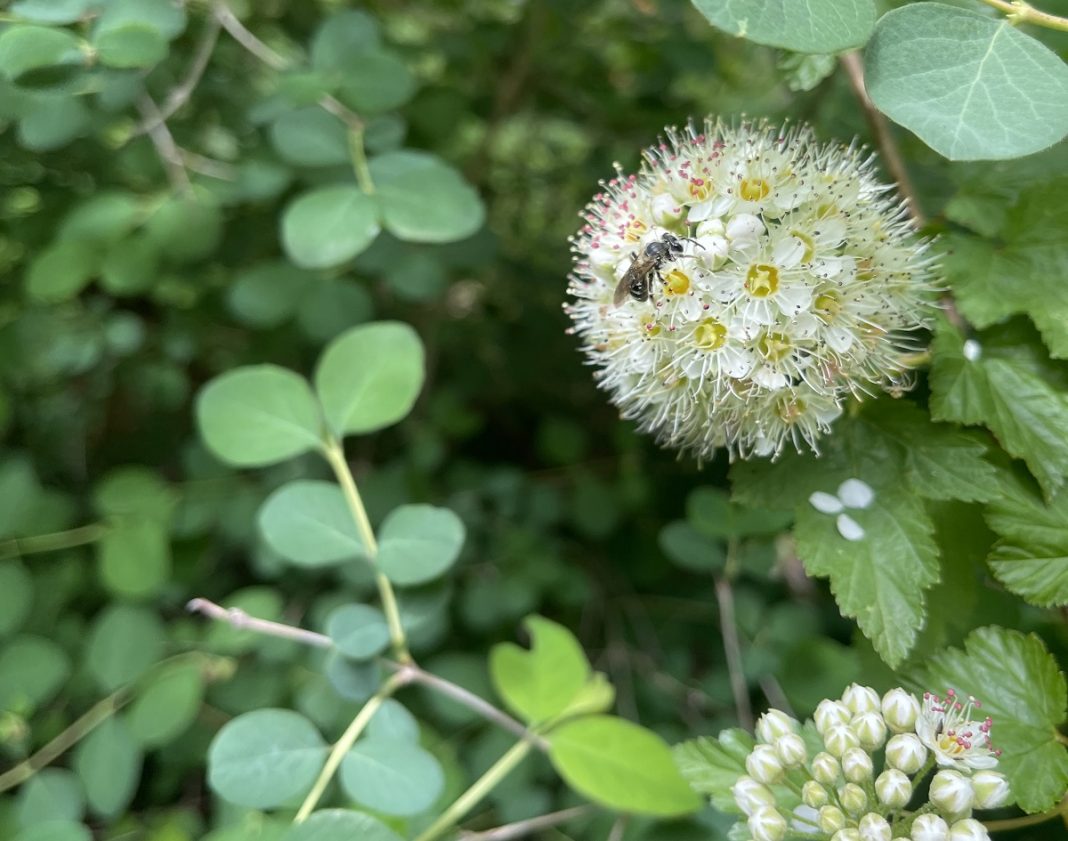When you start planning what to add to your garden this year, go native! Native plants provide natural habitats for wildlife and are easy to grow since they are adapted for our soil and weather. To help you with your planning, Sound Native Plants is a great place to go for all things native plant in Thurston County!
“Sound Native Plants provides skilled plant installation and maintenance, landscape consultation, and sells container native plants in addition to wild-harvest live stake and cuttings materials,” shares Samantha Elie, Nursery, sales & communications manager for Sound Native Plants Inc. “Our crews based in Olympia and Portland stand out with knowledge and passion for restoration ecology!”
Why Should I Plant Native Plants?
Plants are not cheap, and I know from experience how frustrating it can be to try and get non-native plants to grow in our wet, soggy, often clay-based soil. But native plants have adapted to thrive on all those things, making them much easier to keep alive!
“Native plants are fabulous friends to your landscape,” shares Elie. “They tend to be disease resistant and low upkeep, while providing a myriad of ecosystem services. They greatly enhance wildlife habitat in vital ways that are necessary for food systems; drastically reduces the need for landscape maintenance, including chemical fertilizers and pesticides; and preserves the vital native gene pool for continued savvy climate adaptation.”
Have questions? Sound Native Plants can help with any questions you have. They also offer skilled plant installation and maintenance, landscape consultation, along with sales of native plants.
8 SW Washington Native Plants for your Garden
Samantha Elie from Sound Native plants suggest the following eight native plants for your garden. To purchase any of these plants, go the Sound Native Plants website.
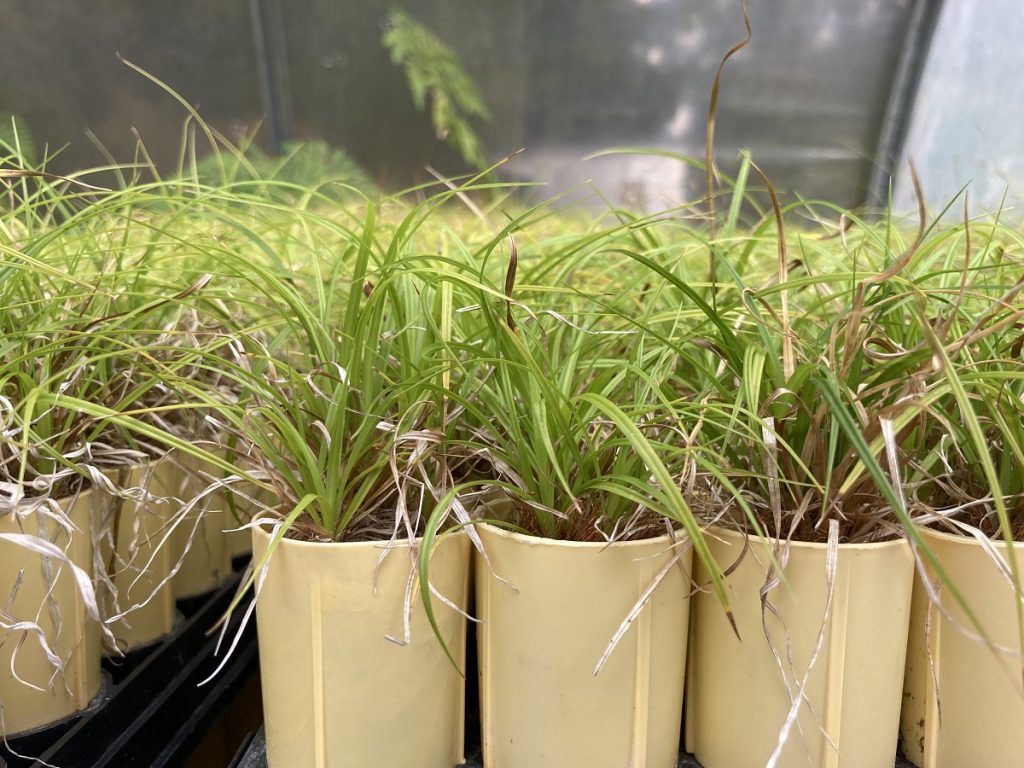
Slender-foot Sedge, Carex leptopoda
Evergreen: Yes, if proper moisture and shade are available
Exposure: Partial to full shade
Soil moisture: Moist
Bloom Period: Late spring
Slender-foot sedge generally transplants and grows well in the shade. Its shade and mesic-moist preferences make this sedge uniquely drought-hardy and well suited for home landscapes. It is “deer
resilient” and can rapidly regrow from roots. Slender-foot Sedge provides excellent low cover for habitat and soil stabilization.
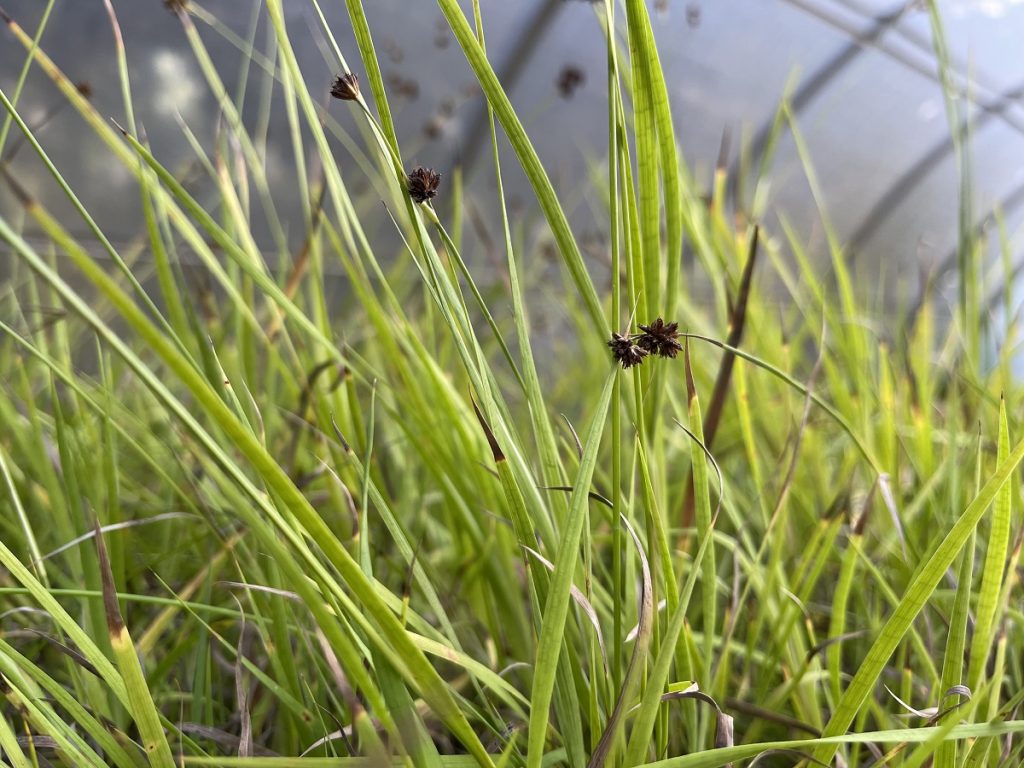
Dagger-leaf Rush, Juncus ensifolius
Evergreen: Yes, if proper moisture is available
Exposure: Full sun
Soil moisture: Moist to wet
Bloom Period: Summer
Dagger-leaf Rush adds a low, vivid texture to the landscape. It grows in moist sites, but usually not in standing water, and tolerates somewhat compacted soil: making it a perfect plant for those sunny and soggy areas! It has medium salt-tolerance and as such is a fabulous choice for homes in upper estuary zones. It is “deer resilient” and can swiftly regrow from rhizomes. This rhizomatous growth secures soil and sediment, significantly reducing erosion. Dagger-leaf Rush spreads rapidly. Flowers are a dramatic
combination of pinks, purples, browns, and blacks, sure to add color-intrigue in contrast with blue-green leaves.
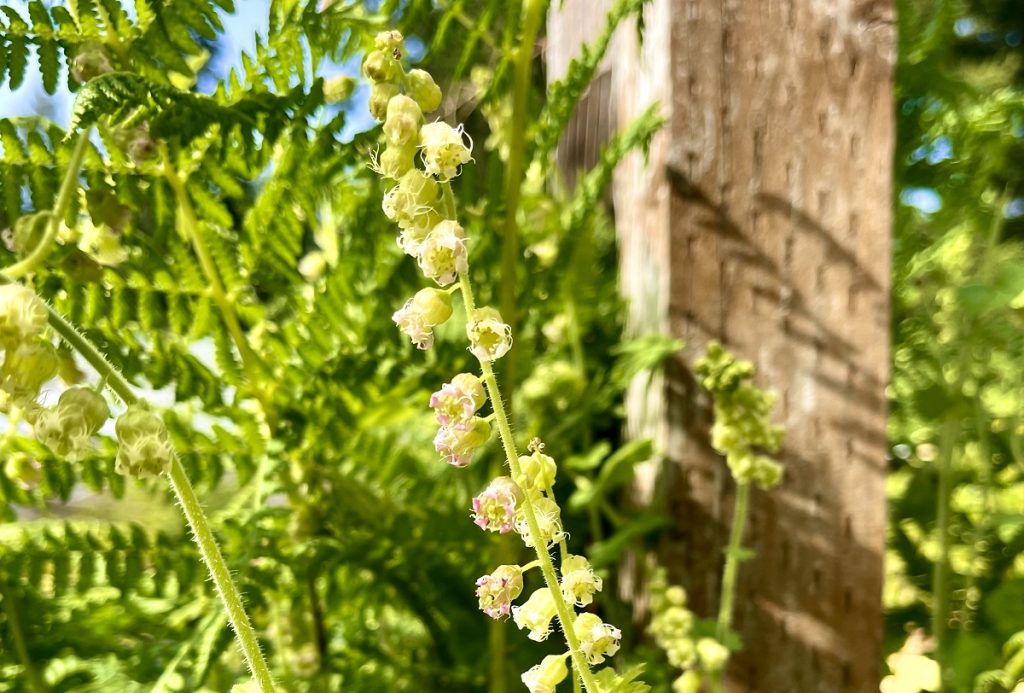
Fringecup, Tellima grandiflora
Evergreen: Yes
Exposure: Partial shade to shade
Soil moisture: Moist
Bloom Period: Spring – early summer
This is the toughest flowering upland herb I know! Fringecup competes with invasive species and tolerates disturbed soil and drought. This species transplants well, self-spreading wonderfully from seed and rhizome. A lover of shade, Fringecup quickly fills the understory of woodlands with frilly white flowers that attract hummingbirds and other pollinators. Fringecup is “deer resilient” and can swiftly regrow from rhizomes. Fringecup is a stellar “porch plant” for native-plant-lovers working in containers.
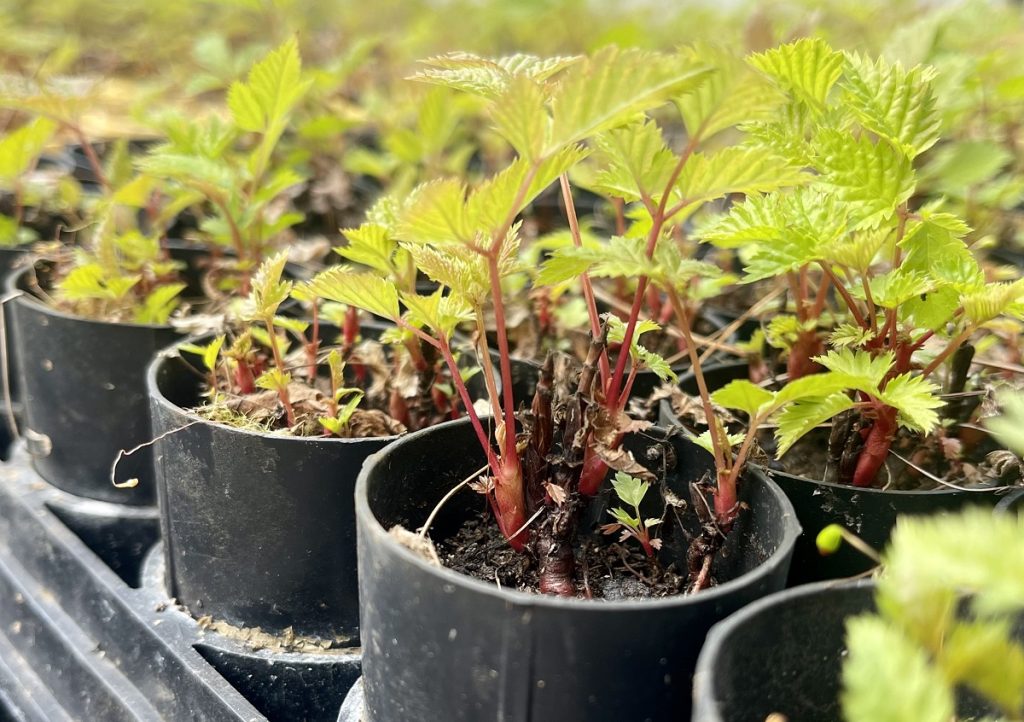
Goat’s Beard, Aruncus dioicus
Evergreen: No
Exposure: Partial shade to shade
Soil moisture: Moist, dry in shade okay
Bloom Period: Late spring – summer
Goat’s Beard transplants beautifully and is much larger than most perennials, providing instant vertical habitat. Goat’s Beard loves moist shade but is tolerant of some sun and seasonal flooding. As an excellent habitat creator, Goat’s Beard flowers attract butterflies and moths, then seeds are food for songbirds, and dense foliage provides shelter. Additionally, Goat’s Beard is “deer resilient” and can swiftly regrow from rhizomes. Goat’s Beard spreads with rhizomes and after a few years growth can be
as wide as it is tall.
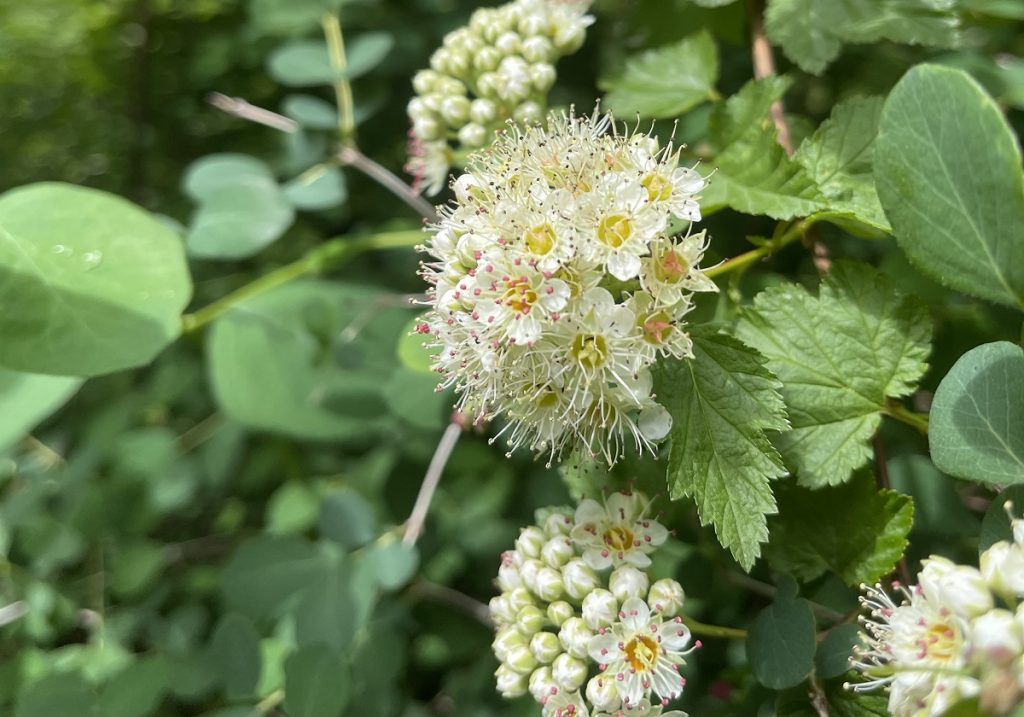
Pacific Ninebark, Physocarpus capitatus
Evergreen: No, but has attractive winter twigs and seeds
Exposure: Full sun to shade
Soil moisture: Wet to moist
Bloom Period: Late spring – summer
Pacific Ninebark is a beautiful shrub that provides year-round color, habitat, and water flexibility. It favors moist to very wet areas, while tolerating disturbed soils, mild drought and drier sites. Additionally, Pacific Ninebark is comfortable rapidly alternating between wet and dry conditions (or “flashy” hydrology), an important characteristic for plants used in rain gardens, ponds, and other fluctuating water edges. Pacific Ninebark is “deer resilient.” Soft new twigs and greenery provide limited browse for other wildlife. Spring and summer flowers are visited by native bees, then seeds feed birds through the fall and winter. Fall foliage, seeds, and winter twigs are vibrant, lending pops of orange and pink-lemonade texture to your landscape.
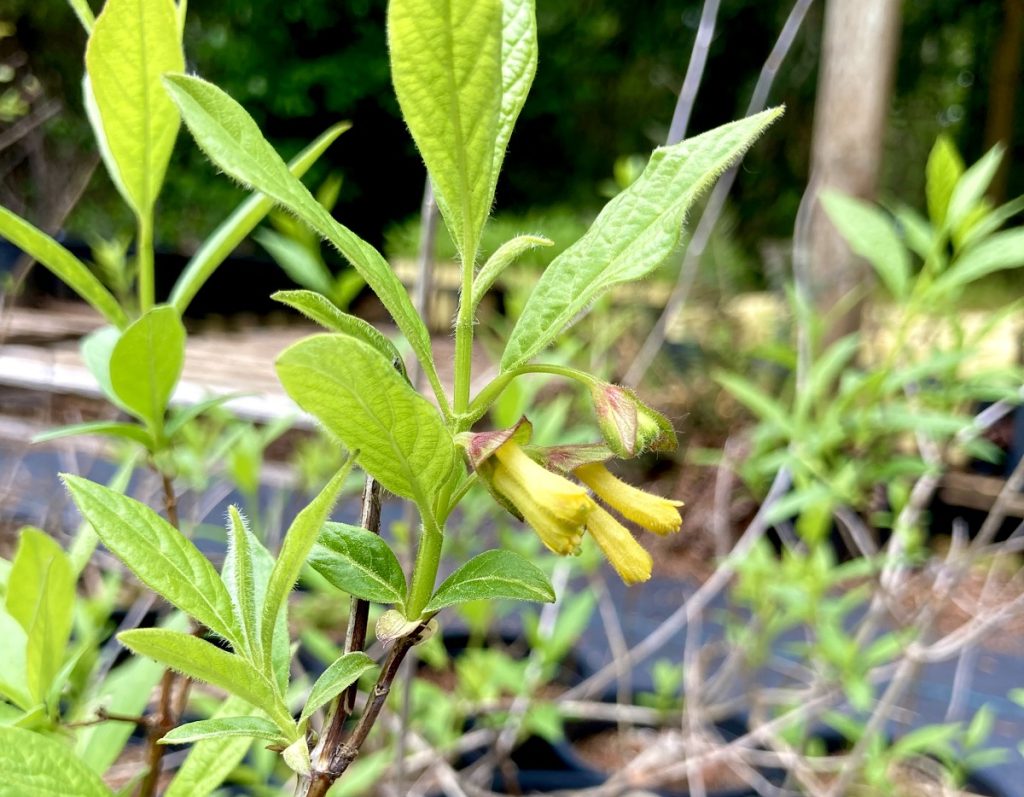
Black twinberry, Lonicera involucrata
Evergreen: No
Exposure: Full sun to partial shade
Soil moisture: Saturated to moist
Bloom Period: Summer
Black Twinberry is a divine habitat creator and will grow into a thicket in the right situation, with plentiful moisture it will put on several feet a year! Growth is less vigorous in drier spots, but Black Twinberry tends to be a survivor and simply takes a less stemmed form. Pairs of flowers attract hummingbirds, bees, and butterflies, then berry twins are favored by birds and other small wildlife. Black Twinberry hosts the larvae of Gillette’s Checkerspot butterflies (Euphydryas gillettii).
Black Twinberry is not so “deer resilient.”
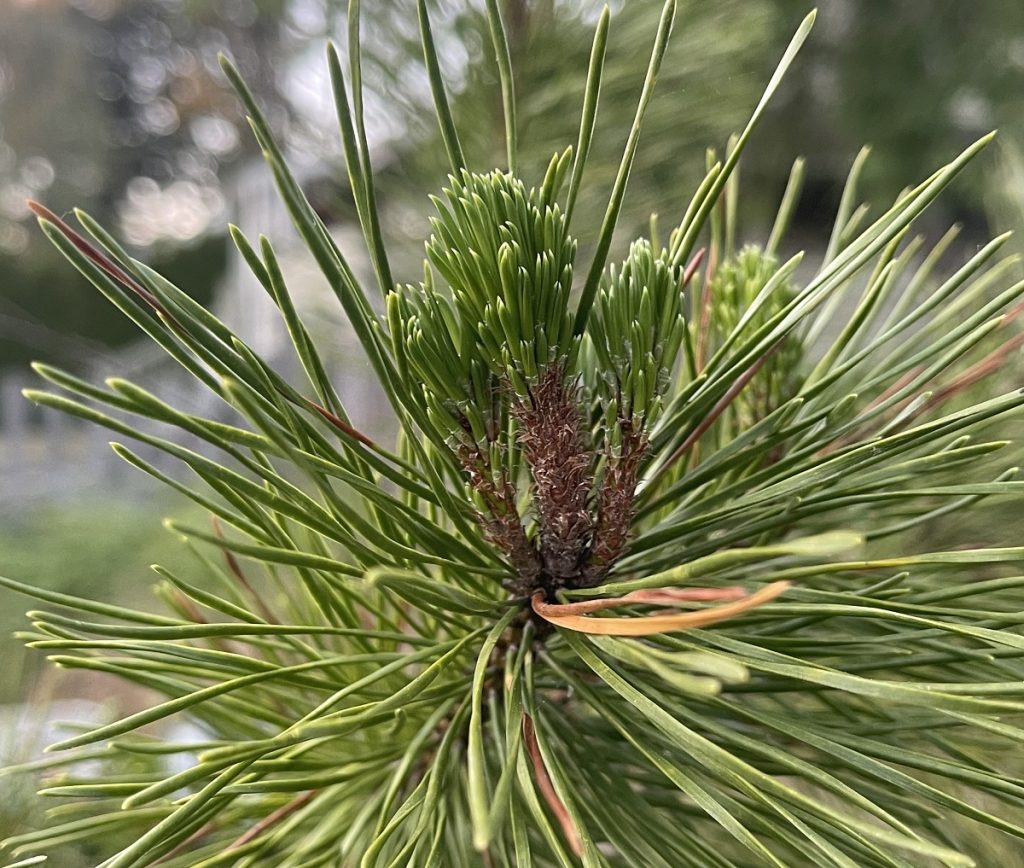
Shore Pine Pinus contorta var. contorta
Evergreen: Yes
Exposure: Full sun to partial shade
Soil moisture: Wet to dry
Bloom Period: Late spring
Shore Pine is a small tree with a lot of wiggly character, creating excellent centerpieces in native gardens and aesthetically-minded neighborhood greenspaces. It is common in coastal bogs and Salish Sea wetlands where minimal nutrients, brackish conditions, or high winds add to its contortionist form. Shore Pine accepts an extraordinary range of moisture, from saturated to dry, rocky soil. It also will tolerate bare mineral soil under full sun, which means it can survive open and unimproved sites. Shore Pine is a stellar “porch plant” for native-plant-lovers working in containers; in conditions with limited
root space, pruning, and controlled nutrients, it will stay small for years of porch enjoyment and privacy. Shore Pine is “deer resilient.” It hosts the larvae of Western Pine Elfin butterflies (Callophrys eryphon).
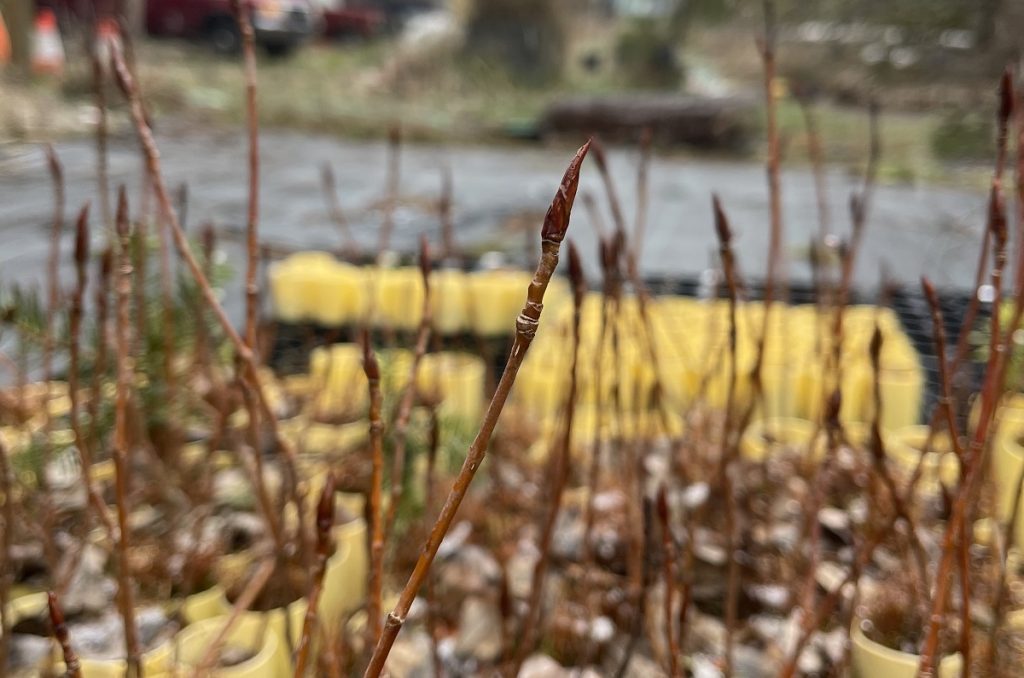
Black cottonwood Populus trichocarpa
Evergreen: No
Exposure: Full sun to partial shade
Soil moisture: Saturated to moist
Bloom Period: Spring
Black Cottonwood are large and lovely trees with heart-shaped leaves and thirsty roots. They grow along lakeshores and streams and anywhere else the soil is wet enough. Black Cottonwood is tolerant of nutrient-poor soil and drought tolerant once established. Keep it wet, and it will grow a dozen feet a year! This rapid growth allows Black Cottonwood to easily outcompete weeds. Live stakes of this species have a very high success rate. Black Cottonwood is “deer resilient.” It hosts the larvae of Viceroy butterflies (Limenitis archippus).
Sources:
Sound Native Plants Species Descriptions
USDA Plant Characteristics Search Database
University of Texas, Lady Bird Johnson Wildflower Center Database







































